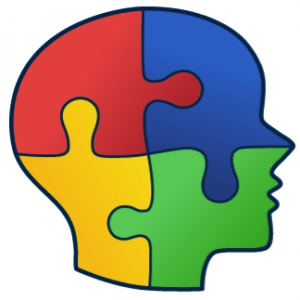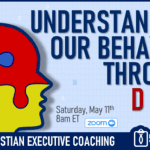What Do Wonder Woman, Lie Detectors and Personality Assessments Have in Common?

This correlation is one of the more interesting: Wonder Woman, Lie Detectors and Personality Assessments? The connection is not as strange as you might think…okay, it’s sorta strange.
They are all contributions of one man, William Moulton Marston. Born in 1893, Marston was an American inventor, psychologist and, oddly enough, comic book writer. He was born and raised in Saugus Massachusetts and graduated from Harvard in 1921 with a PhD in psychology.
Wonder Woman?
He created the fictional DC Comics action hero Wonder Woman. He is also credited with inventing the systolic blood pressure test which became an integral part of his deception research and later integrated into the polygraph exam. He authored the 1928 book “Emotions of Normal People” where he debuted his findings on the concepts of will and its effect on personality and behavior, the precursor for our modern-day and very popular DiSC personality assessment tool.
His life centered on understanding the cause of human behavior. Whether it was measuring elevated blood pressure from fibbing, a super hero’s lasso that forced villains to come clean or the passionate study of the affect of personality on workplace behavior, Marston’s obsession left us a very useful and still modern tool.
The DISC Assessment
The creation of the DiSC behavioral assessment allows companies (more than 70% of the Fortune 500 use it today) to gain and give valuable insight into employee behavior. It is also widely used by executive coaches to facilitate client learning and personal insight for growth.
It portrays 15 classical patterns of behavior such as Achiever, Developer, Objective Thinker, Persuader, Counselor and Promoter, just to name a few. All are based on the four behavioral dimensions:
- Dominance How a person responds to problems and challenges
- Influence How a person influences others
- Steadiness How a person responds to the pace
- Conscientiousness How a person responds to rules
DiSC shows, step-by-step, exactly what to do, and stop doing, to play-up strengths and play-down weaknesses. It is an effective way to enhance workplace performance. The report is not for the faint of heart, however. As much as the results are written to highlight your assets, they also give an unabashed directive on how to improve your shortcomings…all with the goal of building a dynamic career.
Some organizations use DiSC to improve group performance, however, even though no research confirms its effectiveness at the organizational level. Other companies use the tool to predict employee performance or to classify a person for a job, as part of employee screening. These applications do no justice to the original intent of the test: to assist individuals on their own path of human growth and discovery. Use of DiSC for annual reviews, team building, improving project performance and interviewing is only speculative and certainly risky.
Is There Science Behind the DISC Assessment?
So, what exactly is the science behind DiSC? The US Army asked William Marston in the early 1900’s to help them better understand why recruits that all received the same training behaved differently1. Massive amounts of data were collected through direct observation and measurement of behavior2. With this information he could explain, in practical terms, people’s experiences and relationships on the four-dimension scale. He later published the findings in his book. Other psychologists, (Walter V. Clark and Bill Bonstetter) took the research and developed a series of questions in test format that create associations between one behavioral choice and another. It is through these selections the classical behavior patterns emerge.
The power behind DiSC is understanding how behavior (personality) is tied to thought processes and environment. Most people act differently at work than they do at home. This comes from the way we process information (thinking and feeling) in the two different settings. And since the two environments contain other people (personalities) our behavior is further influenced by other behavior patterns. We therefore have an adaptive style while at work and a natural style while at home.
People that score high in the Influence dimension (High I’s), for example, tend to find a good working balance with those who are better at dealing with tasks. It also means High I’s should work harder at setting priorities and deadlines. People that score high in the Conscientious dimension (High C’s), as another example, tend to find a good working balance with those who value quality and accuracy. On the flipside, High C’s put such great importance on detail they can often be critical when assessing coworkers.
Since we don’t have our own Lasso of Truth, we can’t use it on fellow employees or ourselves. Luckily, there is a modern and scientific tool that can get us going in the right direction of self-discovery. While there is a cost associated with taking the DiSC assessment, the benefits are life-long. Thanks Mr. Marston.
If you are interested in learning more about DiSC and what an assessment can do for you and your career, contact us using the Contact tab form on our website. Please put “DiSC Assessment” in the Subject header. Thanks!
Shawn Sommerkamp is a motivational speaker and Executive Coach with 20+ years of Fortune 100 leadership experience. He founded Motivationeer™ to coach Christian professionals how to bring the power of Christ’s word, as the foundation of career success, into corporate and small business America.
1 Williams, Wendell. “Dissecting the DISC.” ERE.net. N.p., n.d. Web. 06 Nov. 2013.
2 “The History of the DiSC® Profile.” The DiSC Profile: From William Moulton Marston to Inscape Publishing. N.p., n.d. Web. 08 Nov. 2013.




